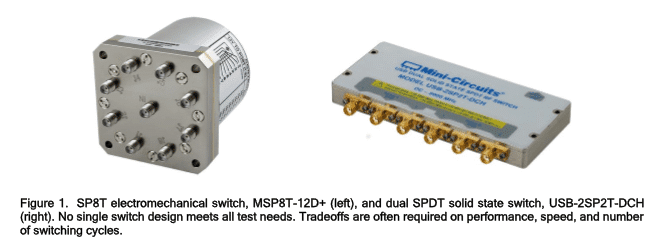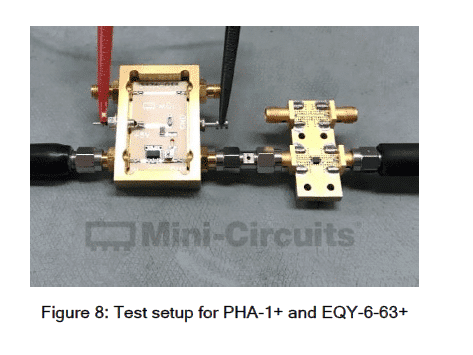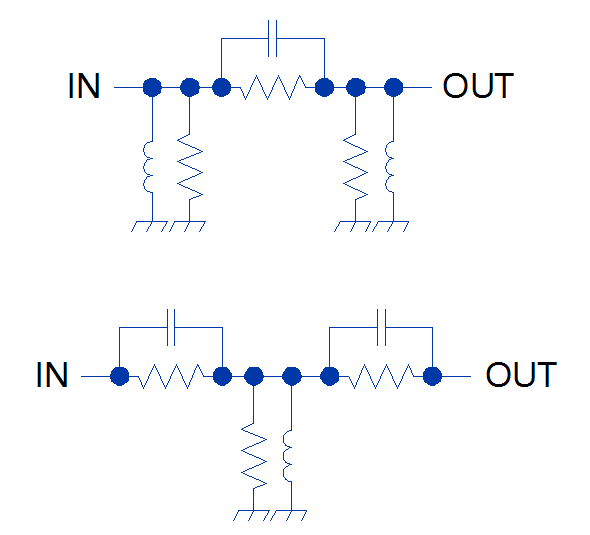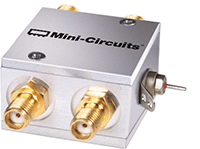The Mystery behind MSL 1, 2, 3

Semiconductor non-hermetic packages have the tendency to absorb moisture. During the surface-mount solder reflow process, moisture trapped in the package will vaporize when heat is applied. The expansion of this trapped moisture creates internal stress, which can cause damage to the non-hermetic package. The damage can take the form of internal separation between the plastic and die or metal frame, wire bond damage, die damage or internal cracks.
AS9100 Transition Drives Technical Excellence

Technical excellence at Mini-Circuits is coming into sharper focus as we approach the fifth decade since our founding by Harvey Kaylie in 1969. This focus has been emphasized in our current initiative to recertify our quality management system (QMS) to the new revision of AS9100. As you may expect, Mini-Circuits places the highest priority on product quality, and this has had many benefits for us and our customers. Our customer returns have been consistently below 10 PPM over the past year, and we will continue finding ways to drive this metric even closer to zero.
Solid State Switching for Next Generation Wireless Test Applications

Rapid growth in the number of connected devices for next generation wireless applications is driving demand for faster, more innovative, and more cost-effective test solutions. The need for reduction in cost and improvement in test throughput is found both at the design verification stage as well as in high-volume production testing. Test engineers are looking for ways to reduce the number of device-under-test (DUT) connections and enable testing of multiple DUTs in parallel from a single test station. This is most often achieved by configuring RF switches in a switch matrix to automate the routing of test signals. This article will explore some of the key differences between the types of switches used in test applications. Switch matrix configurations will be discussed, and a real world switch matrix for a high-volume telecom test application described in detail.
Flattening Negative Gain Slope with MMIC Fixed Equalizers

Equalizers are devices used to compensate for negative gain slope in the frequency response of a wide variety of RF systems. Unlike a standard attenuator with a flat frequency response, an equalizer is a unique kind of attenuator which exhibits lower insertion loss as frequency increases with some known slope. This is a useful characteristic for system designers working in wideband applications where the gain response of circuit elements or of the entire RF chain often varies across frequency.
More than Just a Phase: Understanding Phase Stability in RF Test Cables

One important factor in ensuring accurate, repeatable measurements in RF test applications is the stability of performance of the test cable used. In most test environments, cables undergo frequent bending during normal use, which can result in changes in phase and other performance parameters. Depending on the cable, these changes can be significant enough to degrade the accuracy and precision of your measurements. Therefore, in choosing the right test cable for your needs, it’s important to consider how bending affects cable phase performance and how a cable is (or isn’t) qualified for stability of phase versus flexure.
Compensating Frequency-Dependent Cable Loss in CATV Systems with Mini-Circuits Voltage-Variable Equalizers

In broadband communications systems such as CATV equipment, system performance may critically rely on gain or attenuation flatness. In particular, CATV systems are often plagued by issues resulting from the frequency-dependent attenuation of very long cables (increasing with frequency) as well as the negative gain slope of certain amplifiers. This negative gain slope exhibited by CATV system components can cause a variety of headaches for system designers.
Affordable Solutions for Testing 28 GHz 5G Devices with Your 6 GHz Lab Instrumentation

The capabilities that define the 5G wireless standard will require utilization of wider bandwidths across more regions of spectrum than any current wireless technology. 5G communications will eventually occupy multiple bands from below 6 GHz to above 60 GHz. For now, much of the development effort is divided among sub-6 GHz bands for vehicular connectivity and longer-range transmissions, and the 26, 28, 38 and 60 GHz bands for enhanced mobile broadband applications. The migration to higher frequencies and the multi-band nature of the technology pose a variety of unique challenges for designers developing 5G devices and network equipment. Significant among these is the high cost of instrumentation for test and measurement over such a wide range of frequencies.
Minimizing Impedance Mismatches with Fixed Attenuators

Fixed attenuators are invaluable problem-solvers for circuit-level and system-level designers. In addition to controlling amplitude levels, fixed attenuators can improve the impedance match between impedance-sensitive devices such as amplifiers and filters, and provide the isolation needed to stabilize oscillators.
Model: ZYSWA-2-50DR+ (Redesigned Model)

Prior to developing our mechanical switch, Mini-Circuits purchased a significant quantity of mechanical switches for use in our production test facilities. These switches utilized a combination of springs and solenoids to accomplish the switching. Most operated for less than 1 million cycles, or approximately 50 days in our production environment. This turnover prompted Mini-Circuits to develop our own design to address the short operating life, long lead times, and high cost of using commercially available mechanical relay switches.
High-Order Switch Matrices Facilitate Network Infrastructure Testing

Testing cellular network infrastructure often requires measurement and data collection from dozens – even hundreds – of base stations (BTS) within a test environment. The volume and complexity of signal traffic in these multi-device, multi-user test systems necessitates commensurate capability for routing signals between base stations and test stations. By partnering with customers to lower costs and improve efficiency in high-volume test systems, Mini-Circuits has developed a line of high-order switch matrices supporting a wide variety of switching configurations and control methods. This article will present a case study of a 20 x 6 non-blocking, full access switch matrix used to facilitate signal routing in a cellular network test system with extensions for other applications.





